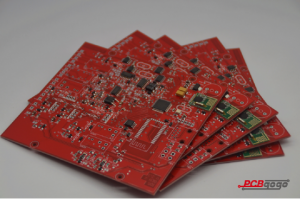What Distinguishes a Reputable Flex PCB Manufacturer?
Reputable Flex PCB Manufacturer
As the world becomes increasingly technological, electronic devices are becoming an integral part of our lives. The technology behind them must be flawlessly designed and manufactured to ensure reliability, durability, and performance. This is why choosing a manufacturer that prioritizes flexibility in manufacturing is crucial. Here are some of the key characteristics that distinguish a reputable flex PCB manufacturer.
First, the reputable flex pcb manufacturer must have the proper equipment and technology to produce high-quality flex circuit boards. This includes the necessary tools like drilling machines, imaging equipment, and placement board testers. They should also have the right certifications and accreditations to show that they can comply with ISO, UL, and IPC standards.

Next, the reputable flex PCB producer should have a skilled team of technicians to perform the production work. This is important because the specialized process of making a flex circuit board requires a high level of skill and expertise to get it right. In addition, the reputable flex PCB producer will have the proper facilities that can accommodate the unique size and shape of your design.
What Distinguishes a Reputable Flex PCB Manufacturer?
Once the production team has the proper equipment and qualified technicians, they can begin to make your flex circuit board. This process begins with the same steps as a rigid PCB, but with additional steps in the etching and plating stages. For example, a flex circuit board may need to have an initial layer of copper (also known as cladding) applied before the actual etching and plating takes place. This is because the flex circuit boards must be flexible enough to bend in specific directions without breaking or degrading the copper.
After the etching and plating processes have been completed, the flex circuit board can be cut to the appropriate length and size. A laser is often used for this step, but it can also be done manually using an oscillating saw. After the cutting is complete, the flex circuit board can be finished with a UV-curable epoxy or acrylic adhesive. Acrylic adhesives are typically preferred, as they have excellent bond strength and durability.
Rigid flex and flex-rigid circuit boards are widely used in various industries, from medical devices to industrial machinery. They are especially popular in healthcare applications, such as CAT scanning systems, ultrasounds, and pacemakers, as well as in consumer products such as printers and keyboards. The flex and flex-rigid PCBs can help reduce space and weight in these applications, while still providing the same functionality as a traditional rigid printed circuit board.
While there are many factors that distinguish a reputable flex PCB supplier, the most critical characteristic is their commitment to providing unmatched quality. By following the steps outlined above, you can systematically evaluate multiple prospects to find the best fit for your business. Be sure to validate their capabilities through past customer reviews, product samples, and facility audits. By doing so, you can be confident that your flex circuit boards will provide the unparalleled performance your company needs to succeed.